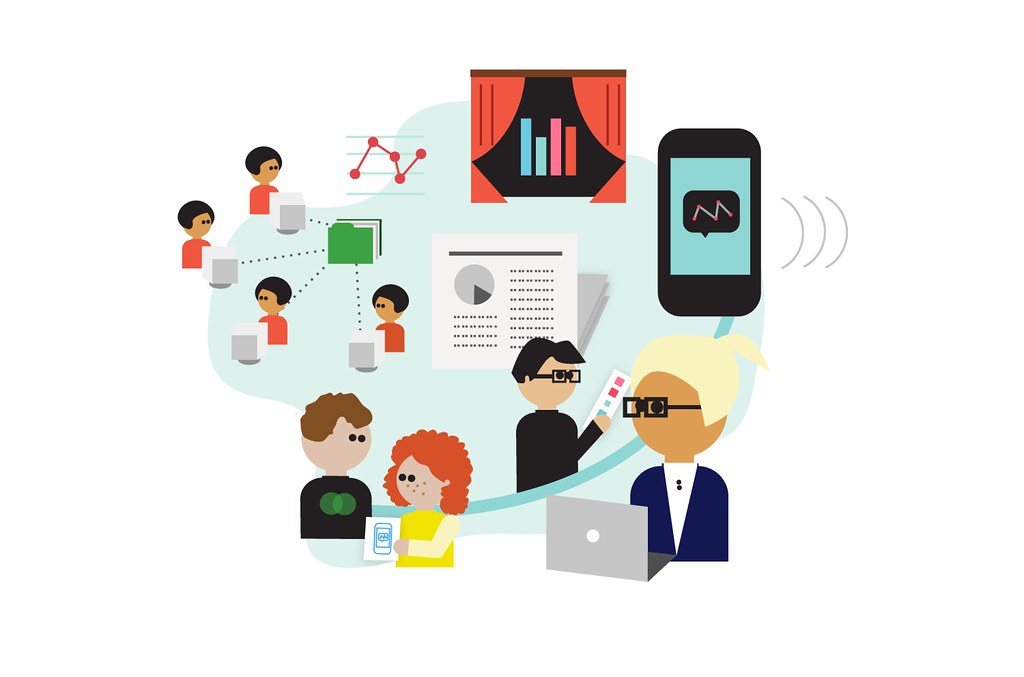The Biggest Misconceptions about Data Journalism

There is one phrase you will hear over and over at Newhouse: journalists don’t do math. Many students at Newhouse are wordsmiths, design wizzes, and/or photography gurus, so if you mention numbers, you will hear an audible groan from everyone within earshot.
This is why so many journalism students run for the hills at the mention of data journalism. Most think of it as polls, charts, complicated math, and endless spreadsheets. Few know that some of the best investigative journalism stands on the shoulders of data. You’ll never get away from spreadsheets, but anyone can do data journalism with critical thinking skills, basic math, and an eye for details.
Assistant Professor Alex Richards, one of the newest members of faculty at Newhouse, feels many misconceptions about data journalism stem not only from a fear of math, but also because few people can fully define data journalism. He said, “The umbrella of data journalism has gotten so wide. It can mean pulling some census numbers together as context for a story. It can mean doing front end online development for some sort of interactive experience. There’s a long continuum of things that it can be.”

While working for Investigative Reporters & Editors, NerdWallet, the Chicago Tribune, The Chronicle of Higher Education, and the Las Vegas Sun, Richards became very familiar with the strange beast that is data journalism. He believes there are three misconceptions that continue to scare people away from the craft.
The first misconception is that data journalism is a new practice. Richards said, “There’s this idea that data journalism started with Nate Silver and election forecasting roughly 10 years ago. There was this wave of popularity after he correctly forecasted the Obama victory in 2008, then again in 2012.” Few people are aware, Richards explained, that data journalism has a much longer history.
In “The Evolution of Data Journalism,” Andrea Lehr explains data journalism got its start in the mid 1800s. She reports, “In the 19th century, the streets of New York City proved to be the perfect incubator for cholera. . .By 1849, more than 5,000 deaths could be traced back to cholera, becoming a full-blown epidemic. To show when the disease was most rampant that year, the New York Tribune published a chart that compared weekly cholera deaths to total weekly deaths. This comparison helped readers see that while total deaths declined during the last week of June 1849, cholera deaths actually began to rise—a visual representation that hinted at the outbreak’s peak, which came a few weeks later.”
Richards also feels that people view data journalism as just numbers and statistics. When it comes to mathematical capabilities, Richards assured you only need a grasp of basic algebra. The most important skill for a data journalist to have is the ability to present the data to readers in an easily-digestible form. “Once you wade into advanced quantitative methods, you really have to worry about, ‘How am I going to explain this to an audience?’” he said.
The last misconception Richards comes across is the idea that data journalism stands alone and has little to do with news reporting or investigative work. “There’s a lot of what would be considered data journalism lurking under the surface of news reporting. People would never even know that journalists had to crunch some numbers in a spreadsheet.” Richards goes on to explain that many award-winning pieces of journalism rely on data, like this year’s winner of the Pulitzer Prize for public service. The South Florida Sun Sentinel used data to expose the “failings by school and law enforcement officials before and after the deadly shooting rampage at Marjory Stoneman Douglas High School.”
Make no mistake. Richards admits that data journalism is hard work, and taking on a data-driven story often means you’re in it for the long haul. However, regardless of your feelings about math or your skills with numbers, any Newhouse student can use data to tell riveting stories.